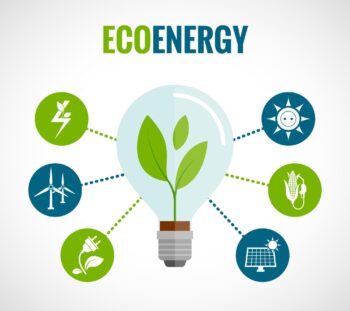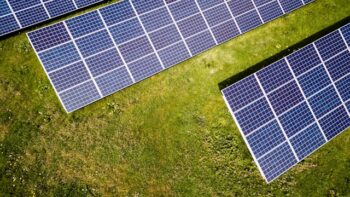As we propel ourselves deeper into the 21st century, the landscape of electricity production and consumption is undergoing a remarkable transformation. This electrifying epoch is shaped by innovative technologies, environmental concerns, and evolving market dynamics. In this blog post, we’ll delve into the currents of these emerging power paradigms and discuss the implications for the future of energy.
I. Renewable Revolution: Harnessing the Power of Nature
A. Solar Soaring
The sun is the ultimate source of energy, and with solar power technology, we’re tapping into its limitless potential. Solar energy has experienced unprecedented growth in recent years, driven by:
- Decreasing costs of solar panels
- Government incentives for renewable energy adoption
- Increased awareness of climate change
According to the International Energy Agency (IEA), solar power is on track to become the largest source of electricity by 2050. As we move towards a greener future, solar energy will play a crucial role in reducing greenhouse gas emissions and meeting global energy demands.
B. Wind at Our Backs
Wind energy is another renewable resource gaining momentum. Wind turbines have become a common sight across the globe, generating clean and sustainable electricity. Key factors contributing to the growth of wind energy include:
- Improved wind turbine design and efficiency
- Competitive costs compared to traditional energy sources
- Heightened focus on reducing carbon emissions
The global wind energy market is expected to reach a capacity of over 2,000 GW by 2030. As the technology advances and costs continue to fall, wind energy will become an increasingly significant player in the global energy mix.
II. Smart Grids: The Future of Electricity Distribution
A. Grid Intelligence
The traditional electricity grid is evolving into a smart grid, a network capable of two-way communication, real-time data collection, and dynamic energy management. Smart grids use advanced technologies such as:
- Internet of Things (IoT) devices for monitoring and control
- Advanced metering infrastructure (AMI)
- Distributed energy resources (DER) integration
Smart grids enable better demand-response management, improved grid reliability, and increased energy efficiency. As the world becomes more interconnected, smart grids will be essential for managing our electricity needs.
B. Microgrids and Decentralization
Microgrids are smaller, localized electricity networks that can operate independently from the main grid. They’re an essential component of the smart grid revolution, providing benefits such as:
- Enhanced reliability and resilience
- Integration of renewable energy sources
- Greater control over energy production and consumption
The rise of microgrids and other decentralized energy systems marks a shift towards a more flexible and adaptive electricity distribution model. As these systems become more prevalent, we’ll see greater innovation in energy management and distribution.
III. Energy Storage: Unlocking the Full Potential of Renewable Energy
A. The Lithium-Ion Breakthrough
Efficient energy storage is a critical component of the renewable revolution. Lithium-ion batteries have emerged as the dominant technology for grid-scale and residential energy storage, thanks to their:
- High energy density
- Long cycle life
- Relatively low cost
With the rapid expansion of electric vehicles (EVs) and renewable energy installations, demand for lithium-ion batteries is surging. This is driving innovation and cost reductions in the battery sector, enabling even greater adoption of renewable energy.
B. Alternative Storage Technologies
While lithium-ion batteries currently dominate the energy storage landscape, alternative technologies are also being explored, such as:
- Flow batteries: Offering long cycle life and scalability, flow batteries are an emerging solution for grid-scale energy storage.
- Compressed air energy storage (CAES): A proven technology that stores energy by compressing air in underground caverns, which is later released to generate electricity.
- Thermal storage: Utilizing materials that absorb and release heat, thermal storage systems can store excess solar or wind energy for later use.
As the demand for energy storage solutions grows, these alternative technologies will play a critical role in diversifying and expanding the global energy storage market.
IV. Electrification of Transportation: Shifting Gears to a Greener Future
A. The Electric Vehicle (EV) Surge
The transportation sector is undergoing a massive shift towards electrification, with electric vehicles leading the charge. The rise of EVs can be attributed to factors such as:
- Advances in battery technology
- Government incentives and regulations promoting zero-emission vehicles
- Growing consumer awareness of climate change and environmental impact
According to Bloomberg New Energy Finance, by 2040, 58% of new passenger vehicle sales will be electric, and EVs will make up 31% of the total car fleet worldwide. This widespread adoption of EVs will play a crucial role in reducing greenhouse gas emissions and improving air quality.
B. Electrifying Public Transportation
Not only are personal vehicles going electric, but public transportation systems are also making the switch. Electric buses, trains, and trams are becoming increasingly popular, driven by factors such as:
- Lower operating and maintenance costs
- Reduced noise and air pollution
- Government policies and initiatives
The electrification of public transportation will help cities reduce their carbon footprint, improve air quality, and create more sustainable urban environments.
V. Policy and Market Dynamics: The Driving Forces of Change
A. Government Incentives and Regulations
Governments worldwide are implementing policies and regulations to encourage the adoption of renewable energy and reduce carbon emissions. Examples include:
- Feed-in tariffs and net metering policies for solar and wind energy
- Tax incentives and rebates for electric vehicle purchases
- Renewable portfolio standards (RPS) mandating a certain percentage of electricity generation from renewable sources
These policies play a significant role in shaping the electricity trends of the future and accelerating the transition to clean energy.
B. Market Forces
Market dynamics are also driving the shift towards renewable energy and electrification. Key market forces include:
- Declining costs of renewable energy technologies
- Increasing demand for clean, sustainable energy sources
- Corporate commitments to carbon neutrality and sustainability
As these market forces gain momentum, the global energy landscape will continue to evolve, with renewable energy and electrification at the forefront.
In conclusion, the electrifying epoch we are witnessing marks a new era in electricity production, distribution, and consumption. From the renewable revolution to smart grids and energy storage breakthroughs, these trends are reshaping the way we generate and consume electricity. With a greater emphasis on sustainability, innovation, and resilience, the future of energy is bright and full of potential.
VI. The Role of Artificial Intelligence and Machine Learning in the Energy Sector
A. AI-Driven Energy Optimization
Artificial intelligence (AI) and machine learning (ML) are playing a transformative role in the energy sector, enabling new levels of efficiency and optimization. AI-driven solutions are being applied in various ways, such as:
- Demand forecasting: ML algorithms can analyze vast amounts of data to predict energy consumption patterns, allowing for better grid management and resource allocation.
- Predictive maintenance: AI can identify potential equipment failures before they occur, reducing downtime and maintenance costs.
- Energy efficiency: AI-based systems can optimize building energy consumption, reducing energy waste and lowering utility bills.
As AI and ML technologies continue to advance, they will be increasingly integrated into energy management, driving further optimization and efficiency gains.
B. Smart Homes and Buildings
The integration of AI and IoT technologies is revolutionizing the way we interact with our homes and buildings. Smart homes and buildings use interconnected devices and sensors to automate and optimize energy consumption, providing benefits such as:
- Improved energy efficiency
- Enhanced comfort and convenience
- Greater control over energy usage and costs
As smart home and building technologies become more widespread, they will play a crucial role in reducing energy waste and contributing to a more sustainable future.
VII. Challenges and Opportunities: Navigating the Electrifying Epoch
While the electrifying epoch brings about many exciting opportunities, it also presents several challenges that must be addressed to ensure a successful transition to a sustainable energy future. Key challenges include:
A. Grid Integration
As renewable energy sources become more prevalent, integrating them into the existing grid can be a complex task. Fluctuating output from solar and wind installations requires advanced grid management solutions and energy storage to maintain stability.
B. Cybersecurity
The increased digitization of the energy sector brings new cybersecurity risks. Ensuring the security and resilience of smart grids, IoT devices, and other digital technologies is critical to maintaining reliable and secure energy systems.
C. Access to Clean Energy
Despite the rapid growth of renewable energy, millions of people worldwide still lack access to electricity. Expanding access to clean and affordable energy is essential for promoting social and economic development and achieving global sustainability goals.
To navigate these challenges and capitalize on the opportunities presented by the electrifying epoch, collaboration between governments, industry, and academia is essential. By working together, we can overcome obstacles and drive the development of innovative solutions that will shape the future of energy.
In this electrifying epoch, we have the opportunity to redefine our relationship with energy and forge a more sustainable, resilient, and efficient path forward. Embracing the trends and technologies driving this transformation is essential to securing a brighter future for generations to come. As we navigate the currents of these evolving power paradigms, the potential for positive change is truly electrifying.


